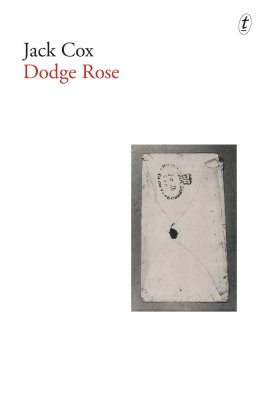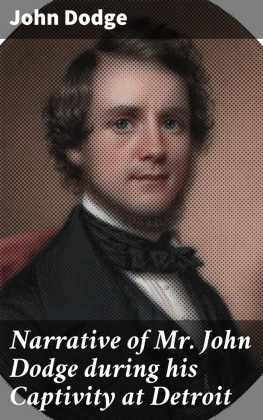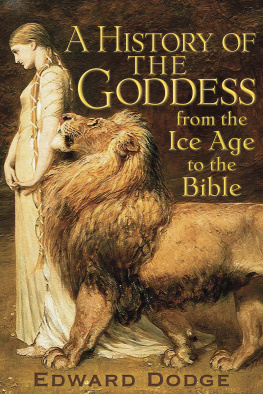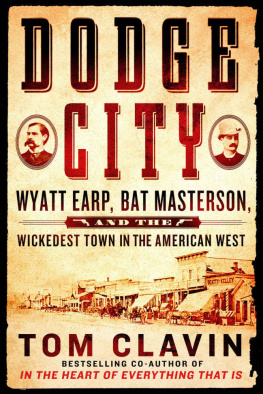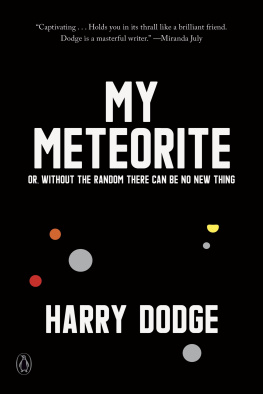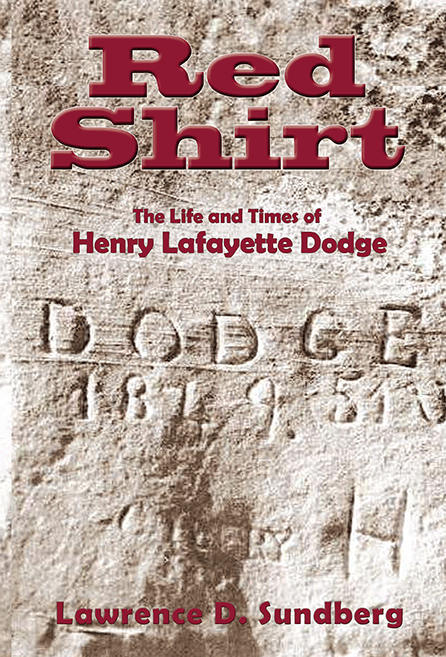Red
Shirt
The Life and Times of
Henry Lafayette Dodge
Lawrence D. Sundberg
T his book is dedicated to my mother, H. Eileen Sundberg, whose patience, support and suggestions made this work possible.
2013 by Lawrence D. Sundberg
All Rights Reserved.
No part of this book may be reproduced in any form or by any electronic or
mechanical means including information storage and retrieval systems
without permission in writing from the publisher, except by a reviewer
who may quote brief passages in a review.
Sunstone books may be purchased for educational, business, or sales promotional use.
For information please write: Special Markets Department, Sunstone Press,
P.O. Box 2321, Santa Fe, New Mexico 87504-2321.
Library of Congress Cataloging-in-Publication Data
Sundberg, Lawrence D., 1952
Red shirt : the life and times of Henry Lafayette Dodge / by Lawrence D. Sundberg.
pages cm
Includes bibliographical references.
ISBN 978-0-86534-949-0 (softcover : alk. paper)
1. Dodge, Henry Lafayette, 1810-1856. 2. Indian agents--New Mexico--Biography. 3. Navajo Indians--New Mexico--History--19th century. 4. Navajo Indians--Government relations--History--19th century. 5. Frontier and pioneer life--New Mexico. 6. New Mexico--History--19th century. 7. Dodge, Henry, 1782-1867--Family. 8. New Mexico--Biography. I. Title.
F801.D63S86 2013
978.90049726092--dc23
[B]
2013028143
www.sunstonepress.com
SUNSTONE PRESS / Post Office Box 2321 / Santa Fe, NM 87504-2321 /USA
(505) 988-4418 / orders only (800) 243-5644 / FAX (505) 988-1025
Marie Therese, born in 1839, would have been six years of age in 1845 when her father probably went west. She always, all her life, had a feeling of sadness and longing where her father was concerned. It was undoubtedly because of this intense feeling that she made me promise that I would someday find his grave at Fort Defiance and take some earth from his grave and put it on her own. She lived to be 93.
Sheridan Spearman to Frank McNitt, January 3, 1972
Introduction
Although Henry L. Dodge has long been a familiar name to American Southwest historians and ethnologists, a comprehensive biography of him had never been done until I undertook the task. Indeed, does his life even justify one? Obviously, I believe it does. Henry L. Dodges story gives a personal view of not only a life, but how that life reflects and reveals the attitudes and circumstances which shaped crucial events of 19 th century New Mexico and of the American West in general. Acknowledging that, my first and most durable reason for writing the book was that I liked Henry L. Dodge, despiteor perhaps because ofhis flaws, and I am convinced his life makes a good story that captures the irreverent and boisterous vitality of the man and his times.
The work has been many years in the making. I began the book in 1994, and through nearly two decades of weaving it through the demands of life, countless evenings and weekends in archives and libraries, hovering for hours above the glare of microfilm readers, hours surrounded by musty and crumbling documents, and days on the road, Ive managed to nearly complete it. Complete, that is, but for one last section, often the least read but probably the most important part of a history, in my mind at least; the acknowledgements of people, usually representing institutions, who made history such as this possible. There were so very many of them, from Arizona to Wisconsin, Albuquerque to Des Moines, Laguna Nigel to Washington, DC. For these are the folks who are preserving uswho we are as people and a nationeach day and every day, as they pour through collections of letters and books and photographs, patiently categorizing and filing them, down to the most trivial minutia, such as unused postage stamps, so that nothing of that niche of history is lost. For much of history is lost already, through fire or flood or war, and most often from simple neglect. It is these people who labor to rescue it, and who make the telling of history a possibility.
That said, simple neglect, the passage of the years, and a spotty memory, compel me to confess that I have lost so many of these individuals names. Many of them, Im sure, are gone now. First, I must thank my late mother, H. Eileen Sundberg, for her support and encouragement and her invaluable assistance in editing. When you needed me, Mom, I found that I needed you, and Ill always love you for that. Id be remiss if I didnt also thank my brother, Dr. Fredrick Sundberg, and sister-in-law Debbie Whitney Sundberg, for their support, not only for putting up with me, but putting me up not once, but twice, at their home in Manassas Junction so that I could continue research at the National Archives in Washington, DC.
As to individuals to whom I owe expressions of gratitude, Id like to specifically thank Lucille Basler of the Ste. Genevieve Historical Society; Eugene Beckett of the Mississippi Valley French Research; David M. Brugge of Albuquerque; Ward Churchill of UC Boulder; Dean Conners of Foundry Books in Mineral Point; Betty Danielson of Albuquerque; Dodge descendants Henry and Brenda Dodge of Apache Junction, Arizona; Curator Mary Freymiller and Archive Assistant Tara Teesch of the Wisconsin Room at the University of Wisconsin, Platteville for their invaluable guidance; and Neil Giffey of the Iowa County Historical Society, Dodgeville for all his insights, expertise and advice as well as for having bought me lunch.
As to the contributing institutions, they must stand in place of the actual individuals, of which there were many, who made the book possible. In alphabetical order, I am indebted to the Angelico Chavez History Library, Palace of the Governors, Santa Fe; the Arizona State Department of Library Archives and Public Records, Phoenix; the Catholic Archdiocese of Santa Fe and Gallup; the Center for Southwest Research, Zimmerman Library, University of New Mexico, Albuquerque; El Morro National Monument, National Parks Service, Department of the Interior, Ramah, New Mexico; the Family History Libraries, Church of Jesus Christ of Latter Day Saints, Albuquerque and Colorado Springs; the Hayden Library Department of Archives and Manuscripts, Arizona State University, Tempe; the Henry E. Huntington Library and Art Gallery, 1151 Oxford Road, San Marino; the Iowa State Historical Society Library and Archives, Des Moines; the Kansas Heritage Center, Dodge City; the Kraemer Library, University of Colorado, Colorado Springs; the Mineral Point Room of Local History, Mary Alice Moore, Curator, Mineral Point Public Library, Mineral Point, Wisconsin; Mississippi Valley French Research, Eugene Beckett, Genealogist, Cambria, Illinois; the Missouri State Archives and Museum, Jefferson City, Missouri; the Moise Memorial Library, Santa Rosa, New Mexico, the National Frontier Trails Center, Independence, Missouri; the Iowa County Historical Society, Dodgeville, Wisconsin; the New Mexico State Records and Archives Center and the New Mexico History Library, Santa Fe; the Pendarvis Historic Site, Mineral Point, Wisconsin; the East Library and Penrose Carnegie Special Collections Library at the Pikes Peak Public Library, Colorado Springs; the Santa Fe Trail Center Historical Museum and Library, Larned, Kansas; the St. Louis Genealogical Society, St. Louis; the St. Rose of Lima Catholic Parish in Santa Rosa, New Mexico; the State Historical Society of Missouri; the Ste. Genevieve County Courthouse; the Ste. Genevieve Historical Society; the Denver and Laguna Nigel Regional Centers of the United States National Archives and Records Administration; the United States National Archives at Washington, DC and College Park, Maryland; the Wisconsin Room, Karrmann Library, University of Wisconsin, Platteville; the Valencia County Courthouse, Los Lunas, New Mexico, the Western Historical Manuscripts Collection, University of Missouri, Columbia; and the Wisconsin State Historical Society, Madison, Wisconsin.


